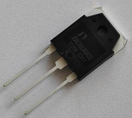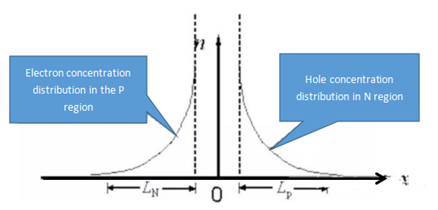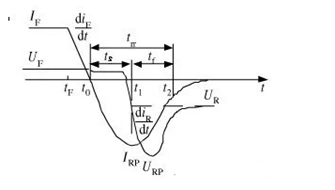IGBT has to know - FRD
1 Introduction
The freewheeling diode (FWD) of the IGBT is a very interesting thing, which has a great impact on the overall performance of the module. Let’s talk about it.


Everyone calls it FRD, because the freewheeling diode of the general IGBT uses a fast recovery diode, which has a very important characteristic - reverse recovery, which not only affects the loss and safe working state of the diode, but also has a great impact on the EMI characteristics.
2. Reverse recovery
When the ordinary diode current changes from forward to reverse, it will not be cut off immediately, but will rise in reverse for a period of ts, and then fall to close to 0 after tf. trr=ts+tf is the reverse recovery time of the diode.
IF is the change process of the diode current at the time of reverse cut-off.
Reason: charge storage effect, tff is the time required for the stored charge to be depleted;
Impact: Affects switching frequency, increases reverse recovery loss.
So what is the charge storage effect?

It is a forward-biased PN junction, under the action of an external electric field:
The holes in the P region diffuse to the N region, and recombine with the electrons during the diffusion process. The holes that have just diffused cannot recombine with the electrons immediately, and the concentration is high, and then gradually decreases. On the contrary, the electrons in the N region diffuse to the P region, so

At this time, the phenomenon that holes accumulate in the N region and electrons accumulate in the P region is called the charge storage effect.
At this time, the reverse voltage is applied, and the holes in the N region and the electrons in the P region move under the action of the electric field to form a current. The reverse recovery process is simply the process of minority carrier disappearance.
Need to remember:Holes have fewer carriers in the N region, and electrons have fewer carriers in the P region, so we say that the reverse recovery process is caused by minority carrier conduction.
3. PIN diode
The fast recovery reverse recovery diode in the high voltage IGBT module is generally a PIN structure diode. What is a PIN diode?
According to the doping concentration, it is generally a P+N-N+ structure, and the doping concentration in the middle is relatively low, which is similar to an intrinsic semiconductor. According to the process, it can be divided into epitaxy and diffusion.
The low-doped intrinsic semiconductor increases the cut-off voltage of the diode, so the PIN fast recovery diode has the following characteristics
Advantages: high withstand voltage, several volts to thousands of volts.
Disadvantages: There is a minority carrier storage effect, the reverse recovery process takes a long time, high hardness, and high forward voltage drop. So what are the requirements for FRD in the process of our use?
4. Requirements for FRD
In general, the reverse recovery should be fast, the reverse recovery current peak value Irrm should be low; the recovery characteristics should be "soft".
Why? Let's look at the reverse recovery process of FRD.

It is easy to understand the requirement of fast recovery characteristics, which can reduce the reverse recovery loss and increase the switching frequency. The ideal state is that there is no reverse recovery process;
Mainly speaking of softness, softness refers to the slope of the current drop in the process of reverse recovery current decline, that is, the tf time period in the above figure. The larger the slope, the harder the shutdown, and vice versa. If the turn-off is too hard, on the one hand, due to the effect of stray inductance, a voltage spike will be superimposed on the diode, and hard turn-off is more dangerous to the diode; Electromagnetic Interference (EMI).
Therefore, for freewheeling diodes, we pursue fast recovery characteristics and soft turn-off characteristics.


